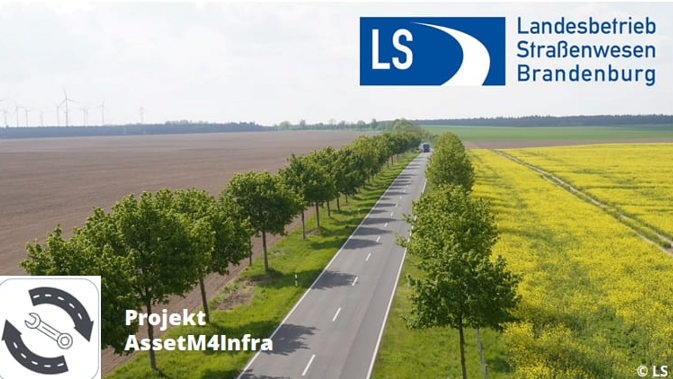Foreseen Project Implementation Start: 01/11/2025
Foreseen Deadline: 01/11/2026
Short Summary
In Senior Citizens & Care, there are more than 4,000 employees who each year are in contact with more than 15,000 people in Aalborg municipality. The goal is to support the senior citizens in being able to manage as many daily tasks as possible on their own and to ensure the best possible care and support for those who need it.
Contextual Information
Senior Citizens & Care is one of the largest professional organizations in the entire region and provides services to people who, in one way or another, need our support and care in everyday life; and it is rarely just one offer, but often a broad and interdisciplinary effort that is required to promote the individual’s opportunity to live as independently as possible.
The sector includes nursing homes, home care, home nursing, activity programs, preventive services, meal services, training, as well as assistive devices.
Description of the Challenge
There are dramatic changes in the demographic development concerning the number of senior citizens in our societies.
Increased life expectancy and lower birth rates are the main factors driving the development of the ageing population where the share of older age groups are increasing – not at least those groups of who are in the most need of long-term health care and practical help.
The ageing population, combined with the vastly improved treatment of diseases like diabetes and cancer, dramatically increases, furthermore, the number of Danes living with one or more chronic diseases.
Finally, does the demographic development also influence, of course, the size of the labour force; that is, the labor market challenge is that the labor force is declining relative to the number of children and senior citizens, pointing to a tighter labor market. Therefore, are issues of availability of labor and recruitment problems at the forefront of the Danish labor market discussions.
Requirements for the Solution
What do we hope to gain:
- Increase the life-quality of citizens
To improve the quality of life for elderly citizens living either at home or in care facilities. The main goal is to help older adults remain independent and self-sufficient for as long as possible, ideally staying in their own homes rather than moving to institutional care.
- Better work processes and working environment
To enhance the work processes and overall working environment for healthcare professionals in the elderly care sector.
- Free up resources (economy - time)
To release human and financial resources within elderly care by adopting technological and digital solutions where feasible.
Our future focus regarding procurement is on:
Supporting Medication
- Solution Supporting Medication
A fully integrated medication-management system which serves to automatically create, dispense and manage prescriptions and dosage schedules, thereby supporting elder citizens, caregivers and health professionals in ensuring safe, efficient and patient-centric medication care.
Sensor technologies
- Incontinence diaper with integrated sensor technology
An incontinence diaper with built-in sensors to measure the product’s utilization level and information transmission via app installed on the caregivers’ mobile devices. Using the app, caregivers can receive notifications and track the diaper’s saturation level, allowing them to change the resident’s diaper at the right time. This helps ensure timely care, improved comfort for the resident, and optimized resource use in healthcare settings.
- E-nose with integrated sensor technology
An electronic nose (e-nose) is a sensor-based device placed near diapers or bed pads and designed to detect and identify specific odors or volatile organic compounds (VOCs). In the context of urinary incontinence care, an e-nose can serve as an intelligent, non-invasive monitoring system that detects urine leakage or changes in urine composition early and automatically. Data from the sensors are transmitted to a digital platform (e.g., via Bluetooth or Wi-Fi), which alerts caregivers or nursing staff when a change is detected.
- Movement sensors
Devices or systems deployed in a citizen’s home environment (bedroom, living room, bathroom, corridors) that detect and monitor physical movement, inactivity, or changes in movement patterns. They can support independent living, early detection of issues (e.g., falls, reduced mobility), and optimise care workflows.
Automated documentation
- Speech-to-Text (Voice Recognition for Care Documentation)
Speech-to-text technology allows care staff and clinicians to record notes, observations, and reports verbally. The system automatically converts spoken language into structured, written documentation.
- Artificial Intelligence (AI) for Documentation and Decision Support
AI supports documentation by analyzing, structuring, and interpreting large amounts of care data automatically. It can summarize observations, detect anomalies, or propose updates to care plans based on data patterns.
- Fluid Records (Intelligent Fluid Monitoring and Recording)
Fluid record systems automate the tracking of a person’s fluid intake and output (hydration level). This can be achieved through smart cups, incontinence sensors, or manual voice entry, which automatically update the digital care record.
Additional Details
Contact information:
Louise Weikop, Head of Office
Senior Citizens & Care, Aalborg Municipality - Denmark
louise.weikop@aalborg.dk
You May Also Like

Innovative data-driven solutions for urban safety and business vitality
The Baltic Institute of Finland
We are looking for solutions that enhance overall urban security and strengthen business vitality by integrating multiple data sources, leveraging advanced analytics and AI methods, and actively engaging both residents and businesses.
To improve safety and the business environment, we seek solutions that:
Collect and analyze data from various sources, such as sensors, pedestrian and traffic flows, crime statistics, and other urban environment metrics.
Detect anomalies and anticipate risks, such as potential safety threats, disruptions, or patterns related to crime and public disturbances.
Actively engage local businesses and residents to ensure the solutions provide value to different user groups and support sustainable urban development.
Finland
IT solutions
Social Inclusion
Security

Asset and maintenance management for the regional road infrastructure
Association for Supply Chain Management, Procurement and Logistics
Due to the prevailing complexity of the amount of information and the multilateral information contexts, the LS is looking for suitable IT technical support in the form of an asset and conservation management system.
Germany
Construction

